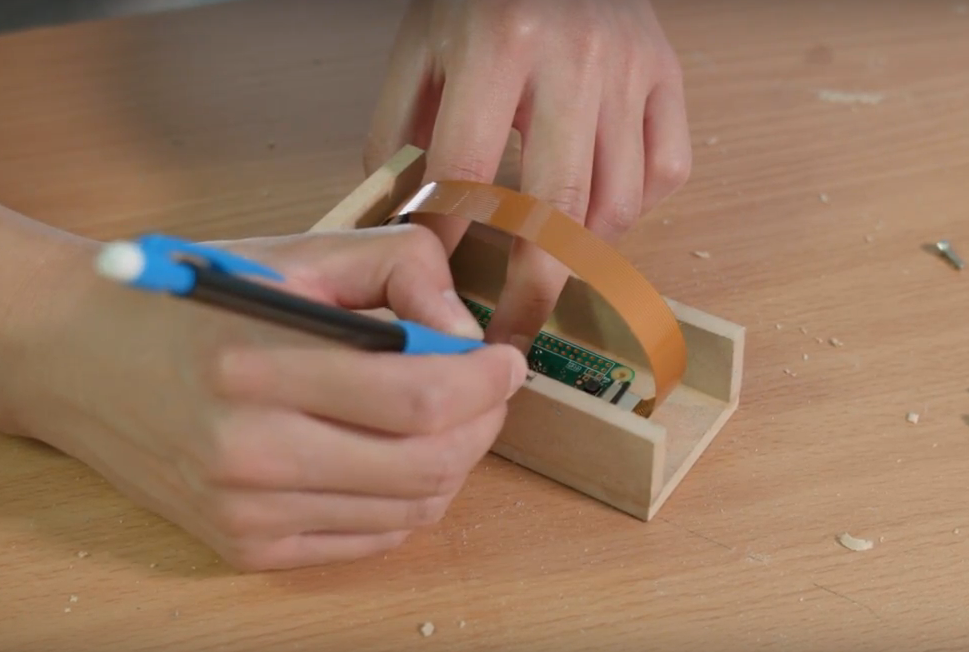
- #Smart trash camera hackster how to
- #Smart trash camera hackster install
- #Smart trash camera hackster update
Electronics and Communication Project Ideas.
#Smart trash camera hackster how to
To start the video stream automatically, you will need to run the program from your /etc/rc.local file see this video for more information about how to configure that. Note: The video stream will not start automatically on startup. ngrok http 5000 and visit one of the generated links in your browser. Note: To view the live stream on a different network than your Raspberry Pi, you can use ngrok to expose a local tunnel.
/cdn.vox-cdn.com/assets/3030787/orb_draft1.jpg)
Visit :5000 in your browser to view the stream. You can find the ip address of your Raspberry Pi by typing ifconfig in the terminal and looking for the inet address. You can view a live stream by visiting the ip address of your pi in a browser on the same network. Notably, you can use a different object detector by changing the path "models/fullbody_recognition_model.xml" in object_classifier =cv2.CascadeClassifier("models/fullbody_recognition_model.xml") Object_classifier = cv2.CascadeClassifier("models/fullbody_recognition_model.xml") # an opencv classifier Video_camera = VideoCamera(flip=True) # creates a camera object, flip vertically email_update_interval = 600 # sends an email only once in this time interval

You can also modify the main.py file to change some other properties. The mail.py file logs into a gmail SMTP server and sends an email with an image of the object detected by the security camera. ToEmail = replace with your own email/credentials.
#Smart trash camera hackster update
Scroll down to the following section # Email you want to send the update from (only works with gmail) Open mail.py with vim vim mail.py, then press i to edit. To get emails when objects are detected, you'll need to make a couple modifications to the mail.py file.
#Smart trash camera hackster install
Next, navigate to the repository directory cd Smart-Security-CameraĪnd install the dependencies for the project pip install -r requirements.txt Make sure you are using the virtual environment by typing the following commands source ~/.profile The tutorial will prompt you to create a virtual environment. The installation took almost 8 hours (!!) on my Raspberry Pi Zero, but it would be considerably faster on a more powerful board like the Raspberry Pi 3. I used the Python 2.7 version of the tutorial. You can install openCV by using the following tutorial. This project uses openCV to detect objects in the video feed. You can open up the file inspector and view the image. Which will save a image from the camera in your current directory. You can verify that the camera works by running raspistill -o image.jpg Select Interface Options, then Pi Camera and toggle on.

Open the terminal and run sudo raspi-config Before running the code, make sure to configure the Raspberry Pi camera on your device. This project uses a Raspberry Pi Camera to stream video. Now you're ready to make it a smart security camera. After double checking the holes are in the right place, use the pilot holes to drill through with a 1/2" drill.Ĭongratulations! You've put together your own security camera. Next, clamp the upper and lower housing together and drill straight through both pieces with a small drill to form pilot holes. Mark a corresponding hole location on the upper housing, and make sure they line up when you put them together.

On the side of the housing, mark the vertical position of this hole as close to the inside bottom surface of the housing as possible without allowing the 1/2" drill you will use to hit the bottom of the housing this is because the power port on the Pi will sit very close to the bottom, and you don't want your hole too high. Then, mark the location of the micro-USB power port on the side of the housing. Line the Raspberry Pi up in the lower portion of the housing with the ribbon cable port at the back of the housing so that the cable won't crease or bend too much. Since the upper housing will cover the sides of the lower housing, we need to drill the same hole in the same location on both portions of the housing. Now we need to drill a hole for the micro-USB power cable to go through.


 0 kommentar(er)
0 kommentar(er)
